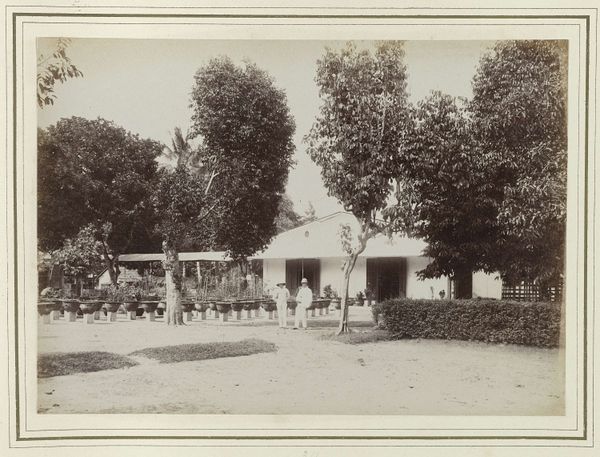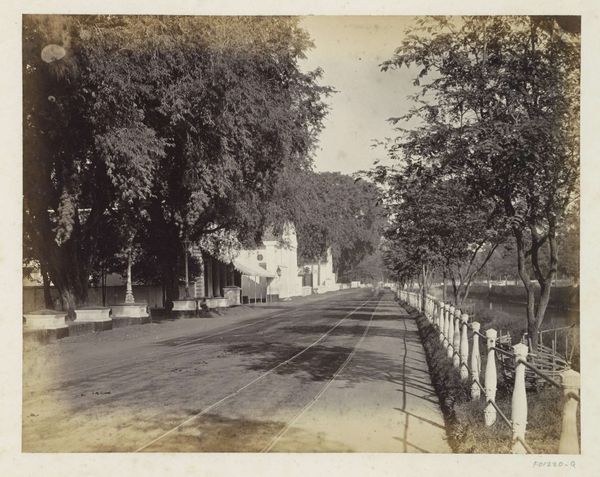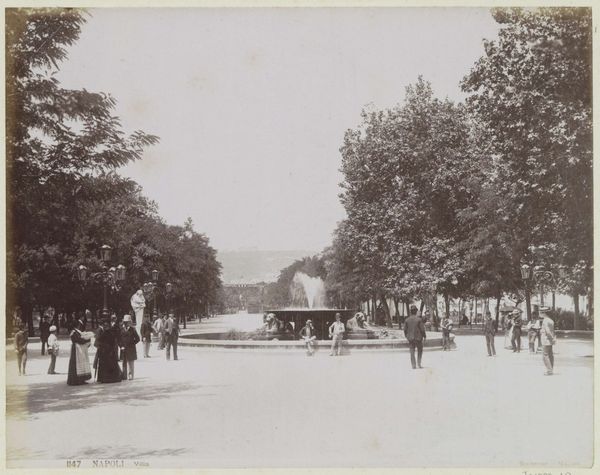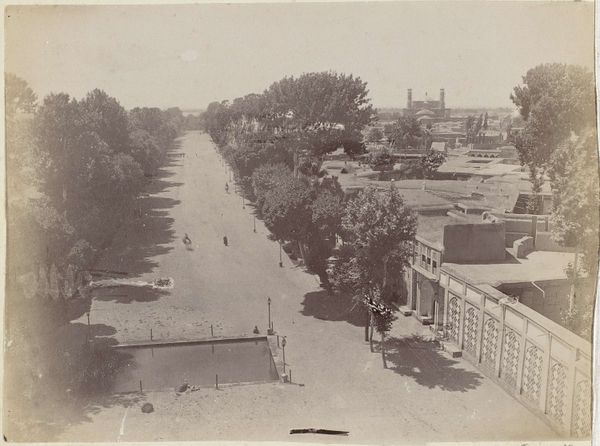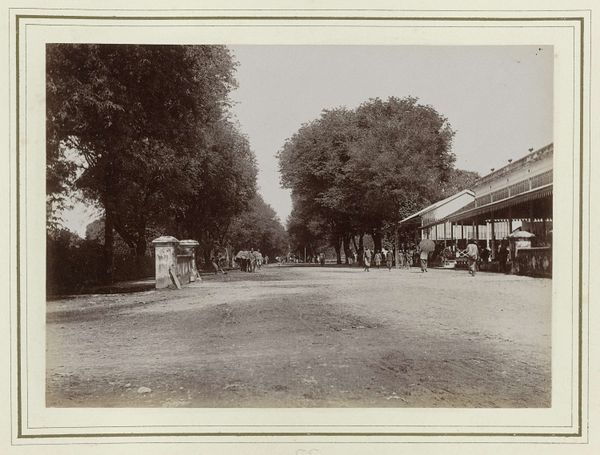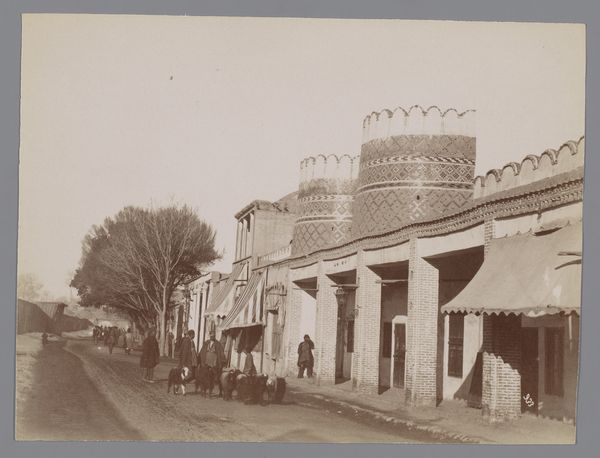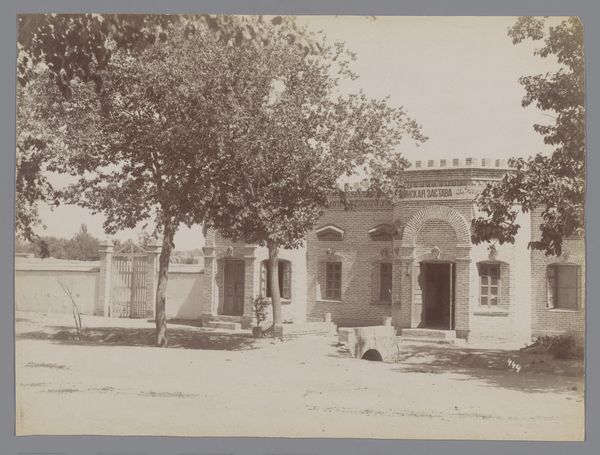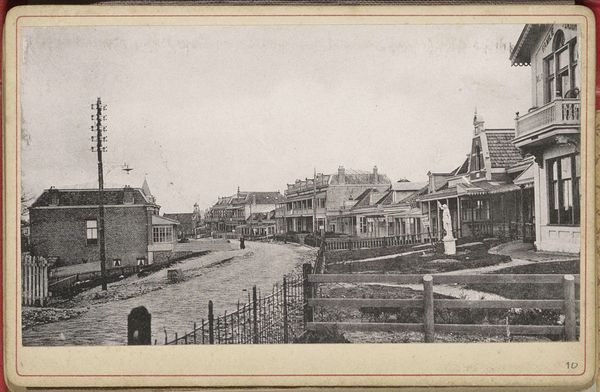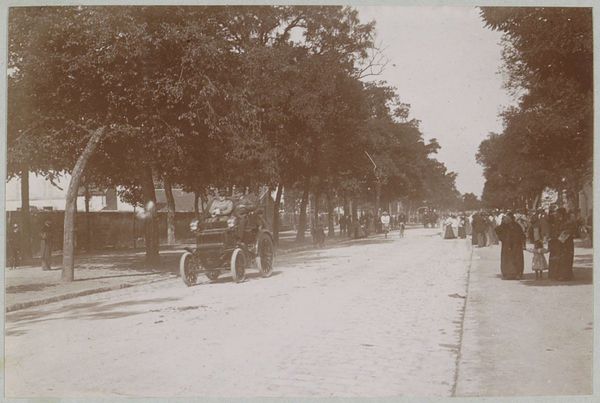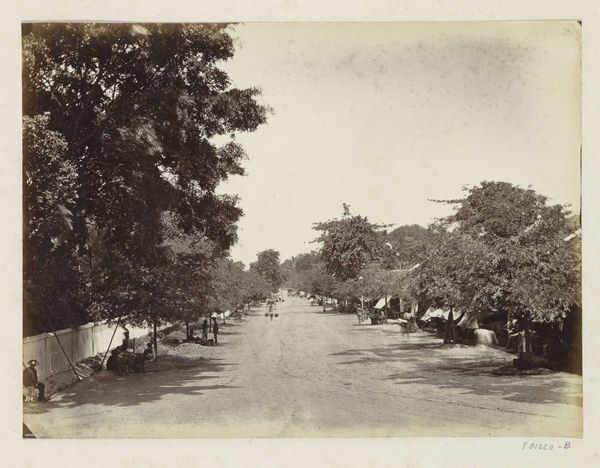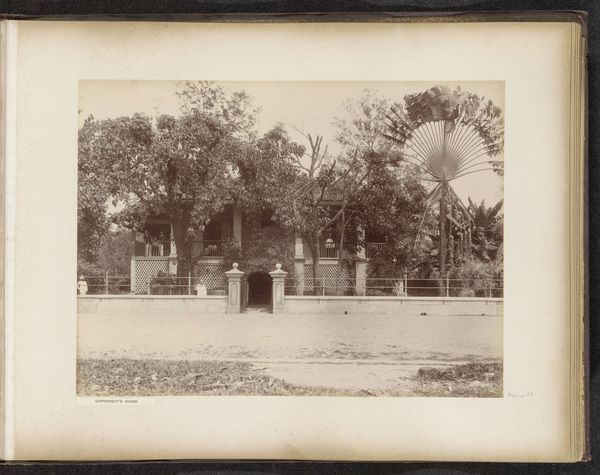
photography, albumen-print
#
landscape
#
photography
#
orientalism
#
cityscape
#
albumen-print
Dimensions: height 190 mm, width 252 mm
Copyright: Rijks Museum: Open Domain
Curator: This photograph presents a view of Place de la Kasbah in Tunis, taken between 1880 and 1900, by AM. The work, rendered in the Albumen print style, offers an example of the Orientalist landscape genre popular at the time. Editor: The sepia tones give it a lovely nostalgic feel. Look how the photographer uses light and shadow to give a strong sense of depth, creating an inviting and tranquil square. Curator: These kinds of images fed into and shaped Western perceptions of North Africa, didn’t they? There's a conscious effort in play to capture the ‘exotic’ allure, which catered to European desires and reinforced a specific power dynamic, you know. Editor: Possibly. Though, I'd like to focus on the strong geometric composition - see how the eye is led from the dusty street toward the architectural features, each structural element building towards the horizon line? The organization is simply immaculate. Curator: But we can’t ignore how this framing influences the way viewers understood the space and its people, surely. These staged views of places become important tools that reflect the ideologies of the period. We are not seeing an objective depiction of Tunisian life here. Editor: And yet, doesn’t the photographer’s eye for visual order and aesthetic harmony offer some insight? It creates its own truth within the artistry, and is the pursuit of beauty always inherently problematic? The tones create unity while drawing you into the texture and architecture, which speaks across cultures. Curator: Perhaps. What’s critical for our listeners to consider is that such photographs contributed to constructing a specific image of Tunis for Western consumption. While there are artistic and even technical achievements, we have to address that wider purpose. Editor: A valuable point to raise! It helps understand the choices, I agree, but still allows me to consider the more objective aesthetic pleasure afforded through its use of form and light, which still appeals today.
Comments
No comments
Be the first to comment and join the conversation on the ultimate creative platform.
